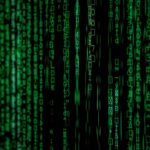In the contemporary landscape where digitization pervades every aspect of our lives, the intersection of technology and healthcare has yielded remarkable innovations. One such breakthrough comes from the Turkey-based digital health startup, h2o therapeutics, which has introduced a groundbreaking feature for the Apple Watch called Foggy. Recently securing FDA approval as a Class II medical device, Foggy represents a significant advancement in combatting Parkinson’s disease by specifically addressing the symptom known as freezing of gait. The timing of the announcement, coinciding with World Parkinson’s Day, underscores the company’s commitment to illuminating the path forward in research that could revolutionize the lives of those affected by this neurological disorder.
Parkinson’s disease, which is marked by symptoms such as tremors, stiffness, and issues with balance, poses a relentless challenge to those it afflicts. Among the symptoms, freezing of gait stands out as particularly debilitating, often causing sudden, transient immobilization that can lead to harmful falls and a marked decrease in the patient’s quality of life. The complexity inherent in Parkinson’s necessitates an array of treatment modalities. Though treatments like deep brain stimulation (DBS) have shown efficacy, their invasive nature warrants the pursuit of less intrusive, yet equally effective, alternatives.
Foggy emerges as an innovative solution designed to meet this very need. More than a mere feature, Foggy serves as an instrument of autonomy for patients hampered by the immobilizing effects of freezing of gait. Utilizing the Taptic Engine within the Apple Watch, Foggy imparts gentle taps on the user’s wrist, serving as a tactile prompt to help patients regain their mobility during episodes of freezing. Sensory cueing is not an entirely novel concept in the management of Parkinson’s, yet the integration of such a feature into a widely adopted wearable device like the Apple Watch signifies a substantial advancement in terms of user accessibility and convenience.
The success of healthcare technologies often hinges on their accessibility, a critical factor that Foggy addresses by integrating with a device that has already achieved mass adoption. This feature’s availability on a consumer device like the Apple Watch means it is easily within reach for those who stand to benefit most. Its on-demand nature ensures that individuals with Parkinson’s receive assistance at the precise moment a freezing episode occurs, circumventing the stigma and logistical drawbacks associated with more conspicuous medical devices.
Personalization lies at the heart of Foggy’s design philosophy. Recognizing that Parkinson’s disease presents differently in each individual, personalization is key to effective symptom management. Through the Apple Watch, Foggy not only provides sensory cues but also gathers data on the user’s specific gait patterns and freezing episodes. This data is critical in customizing the cueing intensity and patterns to match each individual’s unique needs, thereby maximizing the intervention’s therapeutic potential.
Foggy’s dual functionality as a symptom management tool and data collection platform denotes an important leap forward in medical technology. The information captured by Foggy can enhance our understanding of freezing of gait patterns, drive future improvements to the feature, and potentially reveal new insights into the symptom’s characteristics. As healthcare gravitates towards data-centric strategies, the ramifications of such technologies reach well beyond immediate patient benefits; they enrich the collective scientific comprehension of Parkinson’s disease.
The significance of innovations like Foggy is accentuated by the demographics of Parkinson’s disease. Given that a considerable number of those with Parkinson’s reside in long-term care facilities, the capability to independently manage symptoms can profoundly improve individuals’ quality of life and alleviate the demands on caregiving institutions. Wearable technologies grant patients the power to manage their condition, fostering a sense of independence and self-sufficiency that traditional healthcare environments often fail to deliver.
With the introduction of Foggy, h2o therapeutics has done more than release a new piece of technology; it has ignited a flame of hope for the Parkinson’s community. By synergizing state-of-the-art technological development with a deep comprehension of neurological complexities, Foggy symbolizes the dawn of a new era in patient-focused care. It epitomizes the vast potential at the confluence of healthcare and technology, where innovative solutions are transforming the management of chronic diseases.
The narrative surrounding Parkinson’s disease management is undergoing a transformation, thanks to interventions like Foggy. As the medical fraternity forges ahead, breaking new ground, it is these types of technological innovations that hold the promise of delivering substantial improvements in patient lives. The future of healthcare is one that is intelligent, tailored to individual needs, and increasingly, placed into the hands of the patient, as exemplified by the capabilities of Foggy.










